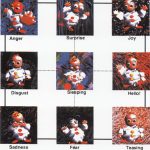Naoko Tosa: Cultural Computing: Hitch Haiku, ZENetic Computer, I.plot
Title:
- Cultural Computing: Hitch Haiku, ZENetic Computer, I.plot
Artist(s) and People Involved:
Exhibiting Artist(s):
Symposium:
- ISEA2008: 14th International Symposium on Electronic Art
-
More artworks from ISEA2008:


Venue(s):
Artist Statement:
Different cultures have special rules and common elements that humans identify as behavior or grammar. We developed a computer model to illustrate this. We also developed Hitch Haiku, a system to express and to interactively experience cultural understanding using cultural computing. ZENetic applies some aspects of Buddhist philosophy as a model in computational science. Our motivation derives from the more than 2,000 years of innovative Buddhist tradition. Methods of interaction between Zen master and pupil, developed to sharpen the understanding of human consciousness, provide a rich base for interactive modeling — a field still unexplored in the Western scientific tradition. Hitch Haiku system interactively aids users in creating haiku, poems with imagery-maximizing mechanisms, the shortest in the world. First, “kire-ji”, words that indicate a transition in the poem, and particles are added to the word/phrase input by the user to make a five- or seven-syllable phrase. Second, phrases including terminology related to the user’s input are located in a phrase database holding examples of haiku from the Japanese literary four-season calendar, ensuring the cultural validity of the haiku. These phrases are then “hitched” together to generate a haiku. Although this system periodically generates flawed haiku, the ability to generate haiku that support the expansion of users’ cultural understanding has been confirmed through assessment experimentation. The i.plot system discovers the hidden connections between words. It determines that a connection between words exists if two words are found in the same thought-form or make up a stimulus-response pair in the Edinburgh Associative Thesaurus. Then it finds several connections between the two words by tracing a large set of possible paths between them, so that the paths traverse several two-word connections. If the chaos engine is in an appropriate state, a preference may be added so that longer paths are displayed, or so that the paths are forced to connect through a more distantly connected word. The user may further expand the connections of any word of interest.
Category:
All Works by the Artist(s) in This Archive:
- Naoko Tosa

Mic and Muse
[ ISEA96]
Interactive Poem
[ ISEA97]
Cultural Computing: Hitch Haiku, ZE...
[ ISEA2008]





